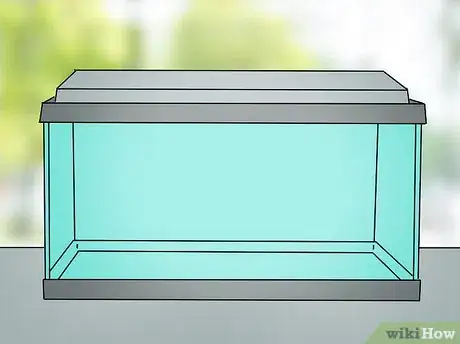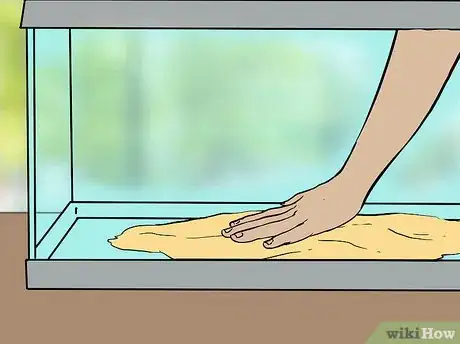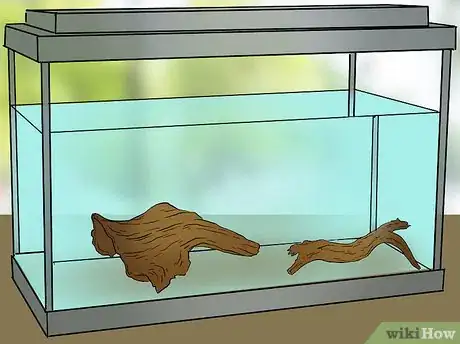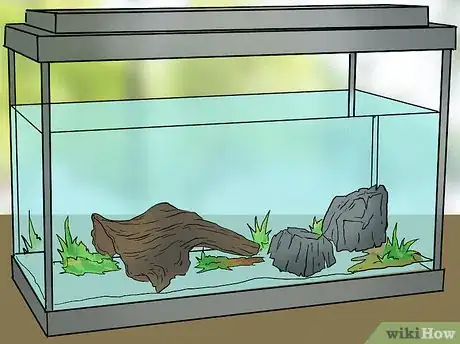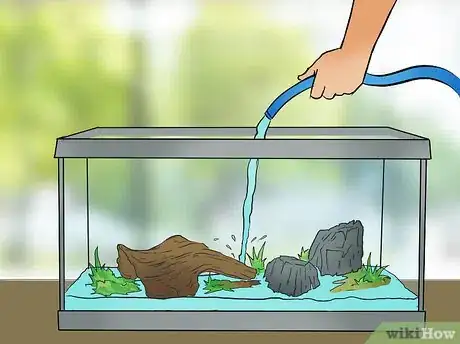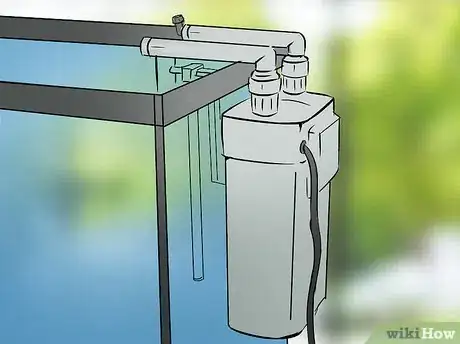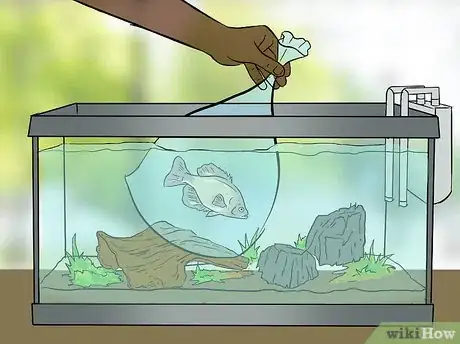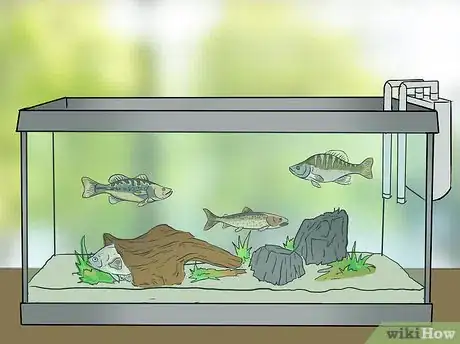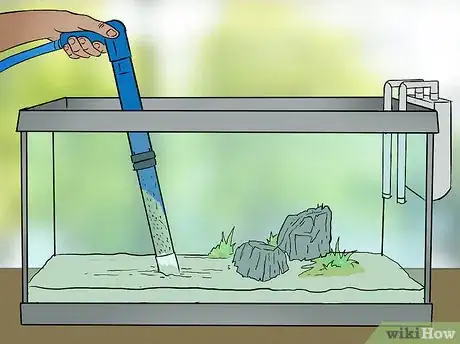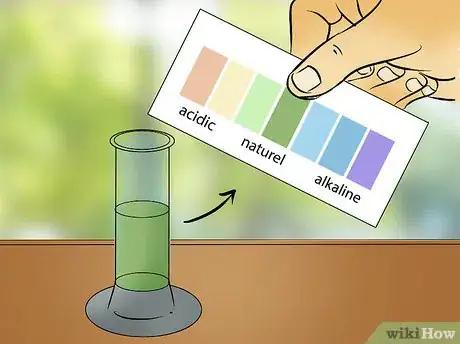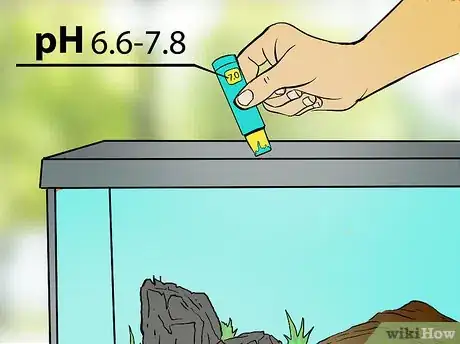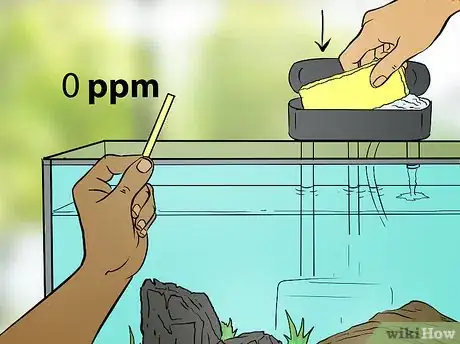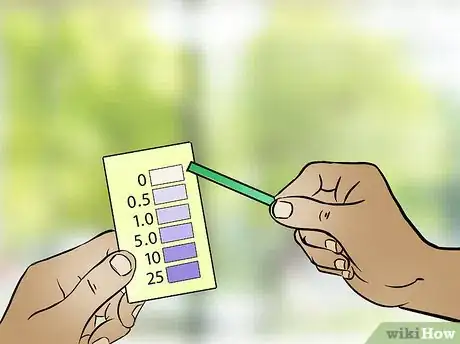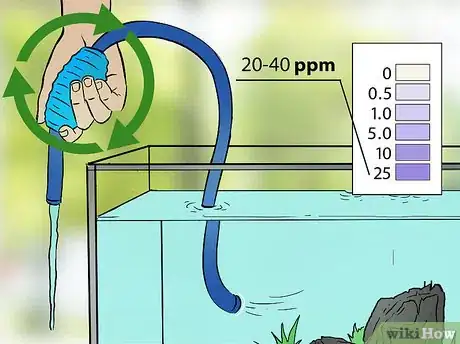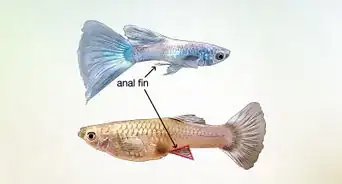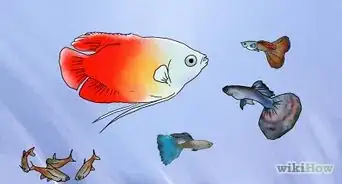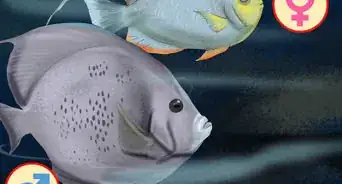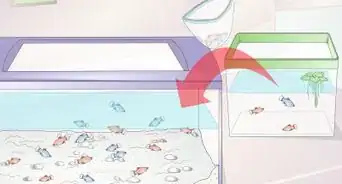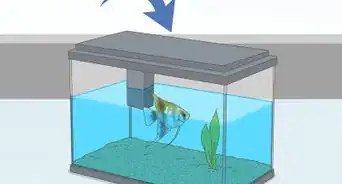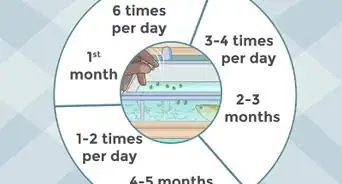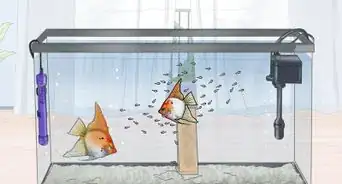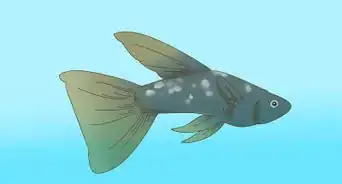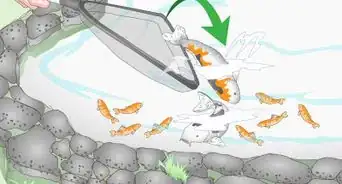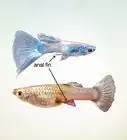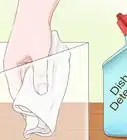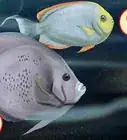This article was co-authored by wikiHow Staff. Our trained team of editors and researchers validate articles for accuracy and comprehensiveness. wikiHow's Content Management Team carefully monitors the work from our editorial staff to ensure that each article is backed by trusted research and meets our high quality standards.
There are 14 references cited in this article, which can be found at the bottom of the page.
This article has been viewed 38,468 times.
Learn more...
Crappie are a type of native, freshwater fish that are found widely across North America. They live in ponds, streams, and lakes which have very clear water. Crappie are commonly kept in outdoor ponds, however, it is possible for them to thrive in aquariums too. Get a large fish tank and set it up with a substrate, driftwood, artificial plants, and a filter. When caring for crappie, provide food every 12 hours, keep the water clear, and test the water quality regularly.
Steps
Setting up the Aquarium
-
1Choose an 80 US gal (300 L) aquarium for 2-3 crappie. Purchase a large aquarium with a cover from your local pet supply store or online. If you want to keep more crappie, choose a larger tank.[1]
- While an aquarium cover isn’t necessary as the crappie cannot jump out, it will help to prevent the water from evaporating out of the aquarium.
-
2Spread a 2 in (5.1 cm) thick base of dark substrate in the aquarium. Choose dark, neutral-toned aquarium gravel or sand. Pour the gravel or sand directly into the tank. Spread it out evenly, ensuring that it fully covers the base.[2]Advertisement
-
3Place 1-2 large pieces of aquarium driftwood into the tank. Purchase pieces of driftwood that are each approximately 2.5 ft (76 cm) long for the crappie to hide under. Place these on the substrate in the aquarium.[5]
- Driftwood also helps the aquarium to look more like a natural crappie habitat.
-
4Decorate 20% of the aquarium with artificial plants and rocks. Choose 5 large plants that are approximately 7–8 in (18–20 cm) tall and 6-7 smaller plants that are approximately 3–4 in (7.6–10.2 cm) tall. Look for aquarium rocks that are dark, neutral tones. Arrange the artificial plants and rocks along the aquarium substrate so that the crappie have plenty of places to hide.[6]
- You can get a variety of artificial plants and rocks that are designed for aquariums from your local pet supply store or online.[7]
- In the wild, crappie spend much of their time hiding among freshwater plants.
-
5Fill the aquarium with dechlorinated room-temperature water. Use either a hose or a clean bucket to transfer the water from the tap into the aquarium. Treat the water with a dechlorinator once it is in the tank. Follow the directions on the label of the dechlorinator to determine how many drops to add per 1 US gal (3.8 L) of water.[8]
- Crappie are freshwater fish that can survive a wide temperature range. They are comfortable anywhere between 55–86 °F (13–30 °C). This means that room-temperature water is ideal and that a tank heater isn't necessary.
-
6Install an external canister filter to help keep the crappie aquarium clean. Position the filter outside the aquarium, approximately 8 in (20 cm) below the water level. Place the mechanical, biological, and chemical media that comes with the filter system into the media trays. Connect the input and output hoses to the filter and ensure that there are no loops or kinks in the tubing. Place the hoses into the tank and leave a 3 in (7.6 cm) gap between each hose and the bottom of the tank.
- Make sure that all of the valves feel tight and secure once the hoses are connected. Then switch on the canister filter to begin the filtration process.
- Always follow the manufacturer's directions to install the filter in your aquarium.
- External canister filters are the best type for large tanks such as crappie aquariums.
-
7Introduce the crappie to the aquarium. Keep the crappie in a secured plastic bag that is full of the original pond or lake water. Let the plastic bag float in the aquarium for 20 minutes so that the crappie have time to adjust to the new temperature. Then release the crappie into the aquarium.[9]
- Fish are cold-blooded animals which means that if they experience a sudden change in water temperature, they can go into shock and become sick.
Caring for Crappie
-
1Feed the crappie live food every 12 hours. Crappie eat a wide range of smaller, freshwater insects, fish, and crustaceans. Place 4 small fish that are approximately 1 in (2.5 cm) long for every 1 crappie into the aquarium at 12 hour intervals.[10]
- Try insect larvae, goldfish, minnows, small yellow perch, or juvenile bluegill to see what the crappie prefer.[11]
- Although you can try feeding the crappie freshwater fish pellets, they tend to be uninterested and will only eat live food. However, if you do want to try fish pellets, try finely ground, commercially prepared striped bass. Follow the manufacturer’s directions for feeding amounts.[12]
-
2Keep crappie with adult bluegill or largemouth bass for more variety. Wild crappie often live alongside other freshwater fish species. If you are adding more fish to the crappie aquarium, ensure that the aquarium is large enough to house all of the fish. Include plenty of artificial plants, rocks, and driftwood to make sure that there are plenty of places for the fish to hide.[13]
- Pumpkinseed is another popular species choice to keep with crappie.
-
3Clean the aquarium every 2 weeks to keep the water clear. Scrub the algae off the walls of the aquarium. Change the media filters in the filtration system. Take out all of the plants and rocks from the aquarium and scrub these under warm water. Remove 25% of the water every time you clean and dechlorinate any new water before you add it to the tank.[14]
- In the wild, crappie prefer habitats with clear, rather than muddy or murky waters.
- Use a gravel vacuum to clean the gravel in the aquarium if it looks dirty. Vacuum the gravel until it's clean and about ⅓ of the water has been removed from the tank, then add the same amount of fresh dechlorinated water to the tank.
- Keep the crappie in the tank while it’s being cleaned if possible so that they don’t get stressed. However, if you need to remove the crappie while you are cleaning, use a net to place them into a large bucket that is filled with the original tank water.
Maintaining the Water Quality
-
1Use a freshwater testing kit to test the water quality every 2 weeks. Purchase a freshwater testing kit from a pet supply store. Fill the test kit test tube up to the designated level with the aquarium water. Add the testing solution to the test tube and use the color chart to determine the level of each parameter.[15]
- Test the water quality if the crappie become unwell to ensure that the parameters are correct.
-
2Maintain a pH of 6.6 to 7.8. This pH range is ideal for freshwater fish such as crappie. Use the pH testing solution that came with your freshwater testing kit. If the pH of your aquarium needs to be increased or decreased, purchase a pH adjustment product from your local pet supply store.[16]
-
3Ensure that the ammonia level stays below 0 parts per million (ppm). Test the amount of ammonia in the crappie aquarium using the testing solution in the freshwater testing kit. Add an ammonia neutralizer to the tank if the reading is above 0 ppm.[17]
- Although ammonia naturally builds up in all aquariums due to fish waste and uneaten food, it can become extremely toxic for the fish.
-
4Check that the nitrite level in the aquarium is under 0 ppm. Use the nitrite testing solution in the freshwater testing kit to make sure that the nitrite level is safe for the crappie. If the level is too high, change 25% to 30% of the water weekly until you get a suitable reading.[18]
-
5Adjust the nitrate level to be within a range of 20 to 40 ppm. Test the level of nitrate in the aquarium with the freshwater testing kit. Change 25% of the aquarium water each week if the nitrate level is too high.[19]
- The crappie can become stressed if the nitrate level is too high.
Things You’ll Need
- Aquarium
- Aquarium substrate
- Driftwood
- Artificial plants and rocks
- External canister filter
- Live food
- Commercially prepared striped bass pellets (optional)
- Scrubbing brush
- Gravel vacuum
- Net
- Bucket
- Freshwater testing kit
- pH adjustment product
- Ammonia neutralizer
References
- ↑ https://www.researchgate.net/publication/301251362_Aquaculture_Techniques_for_Crappie_Pomoxis_spp_Culture
- ↑ https://youtu.be/9lTma5IrXX8?t=29
- ↑ http://www.livingthecountrylife.com/homes-acreages/raising-crappie/
- ↑ https://www.floridamuseum.ufl.edu/discover-fish/species-profiles/pomoxis-nigromaculatus/
- ↑ https://youtu.be/ZzJW96ur73U?t=18
- ↑ https://youtu.be/C-nNwYULF30?t=26
- ↑ http://www.livingthecountrylife.com/homes-acreages/raising-crappie/
- ↑ https://www.researchgate.net/publication/301251362_Aquaculture_Techniques_for_Crappie_Pomoxis_spp_Culture
- ↑ https://www.aquariumcarebasics.com/aquarium-water-quality/add-fish-gently/
- ↑ https://youtu.be/-vxkFhJU58I?t=15
- ↑ http://academics.cehd.umn.edu/hatch/research/fish/fishes/black_crappie.html
- ↑ https://www.researchgate.net/publication/301251362_Aquaculture_Techniques_for_Crappie_Pomoxis_spp_Culture
- ↑ https://youtu.be/5n9HD9HXjdQ?t=8
- ↑ https://www.petmd.com/fish/care/evr_fi_how-to-clean-fish-tank
- ↑ https://fishlab.com/aquarium-test-kit/
- ↑ https://www.ratemyfishtank.com/blog/water-testing-in-your-freshwater-aquarium
- ↑ https://www.ratemyfishtank.com/blog/water-testing-in-your-freshwater-aquarium
- ↑ https://www.ratemyfishtank.com/blog/water-testing-in-your-freshwater-aquarium
- ↑ https://www.ratemyfishtank.com/blog/water-testing-in-your-freshwater-aquarium
- ↑ https://www.dec.ny.gov/outdoor/96938.html
About This Article
To keep crappie in an aquarium, you'll need an aquarium that holds at least 80 gallons of water for up to 3 crappie. Once you have a tank, line the bottom of it with a dark substrate, and add rocks, artificial plants, and pieces of driftwood so your crappie have plenty of places to hide. Then, fill the tank with dechlorinated water, and install a filter to help keep the water clean. If you want to introduce other fish to the tank, consider getting some adult bluegill, largemouth bass, or pumpkinseed. To learn how to feed crappie, scroll down!
